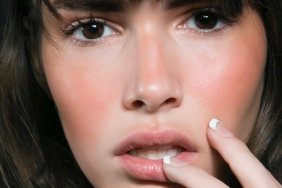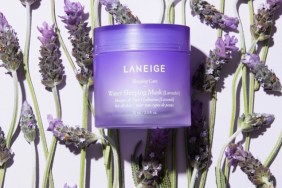You may not realize that many ingredients commonly found in American beauty products are actually banned in other countries. But we don’t blame you. Labels on beauty products tend to be long and filled with words the average person doesn’t recognize. So should we only go the natural route? Or only reach for products that meet European Union standards? We turned to the experts to find out, but first it’s important to understand exactly why banned ingredients differ between the United States and the EU.
“In Europe, they take a preventative approach and outlaw any ingredient that has even the slightest possibility of being hazardous,” explains Matthew Milèo, skin care expert and founder of Milèo New York. “Whereas the U.S. takes the reactive approach and allows an ingredient until it poses a problem and needs a solution. Only then, when there is substantial scientific evidence, does the U.S. actually follow through with a ban.”
On the flip side, there are ingredients approved in Europe that end up being banned in the U.S. “For example, certain sunscreens approved in the EU ended up being found in wildlife and breast milk and thus became banned in the U.S. So the process works both ways.”
So which ingredients are banned in other countries? Check out the list below.
Hydroquinone
Hydroquinone is a skin lightening agent found in brightening creams. “It can lower active melanocyte activity which, over time, can prevent and correct pigment caused by sun damage or melasma,” says Dangene Enterprise, beauty expert and founder of Dangene: The Institute of Skinovation at CORE. “The EU has banned hydroquinone in concentrations above 1 percent because studies in mice have shown the ingredient to be carcinogenic and contain trace amounts of mercury. There is some controversy as to whether or not the absorption level by humans has the same effect.”
The Verdict: “I believe when used safely hydroquinone can be a very effective solution for pigment. I recommend a cycle of three months on and off the cream and consistent sun protection. Darker skin types should avoid higher concentrations above 2 percent as it’s linked to ochronosis, a condition that causes rough, dark areas to appear on the face.”
Parabens
Parabens are used in many beauty products as preservatives, including makeup, moisturizers, hair care and shaving products. “The EU has identified and banned several of these as endocrine disruptors,” says Enterprise. “Their affect on hormone function can cause an increased risk of breast cancer in women and low sperm count in men. That said, it’s estimated that 85 percent of all products contain parabens, which makes them difficult to avoid.”
The Verdict: “My advice is to limit paraben exposure when and where you can. There are many cleaner beauty, household and personal care products widely available now.”
Phthalates
Phthalates can be found in many lotions and products containing fragrance. “Phthalates increase product penetration and aid in fragrance longevity,” says Enterprise. “The EU has banned a handful of these compounds in personal care products because exposure to phthalates has been linked to hormone disruption, infertility, cancer and obesity.”
The Verdict: “I recommend checking labels whenever possible and avoid products containing synthetic fragrance.”
Talc
This highly absorbent mineral is commonly found in cosmetic powders. “The EU banned its use in cosmetics after finding it contained asbestos, a known carcinogen and, recently, talc has also been linked to ovarian cancer,” says Enterprise. “Talc used in cosmetics today is regulated and free of asbestos. However, with growing concerns about carcinogens, many companies are replacing talc with mica.”
The Verdict: “I typically recommend my clients steer clear of powders and powder foundations. They are extremely pore clogging and settle into fine lines and wrinkles.”
Petroleum
Petroleum is in everything from shampoos and conditioners to creams, lotions, perfumes, makeup and nail polishes. “Petroleum jelly became hugely popular after it was discovered by oil drillers that slathered the stuff all over their bodies to protect and soothe their skin from dryness and irritation. Several decades later, petroleum is listed as a carcinogen in Europe and therefore banned,” says Milèo.
“Unlike the U.S., Europe was flooded with low-quality, unrefined petroleum jelly from Eastern Bloc countries that contained questionable quality, dark yellow to brown in color petroleum and relatively high levels of polycyclic aromatic hydrocarbons, which have been linked to cancer. The petroleum jelly approved by the FDA has been refined and stripped of any hazardous materials and has been shown to be safe and very effective for cosmetic use. It’s even listed as a pharmaceutical active due to its strong efficacy.”
The Verdict: “The Environmental Working Group has given petroleum jelly a low hazard rating of 0 and it’s thus considered very safe to use in cosmetics. That said, petroleum doesn’t get metabolized by the body so while our skin is absorbing somewhere from 0 percent to 70 percent of the ingredients from our products, whatever amount of petroleum that does get into your body never gets broken down, meaning it’s sitting with us for years and science hasn’t discovered the long-term effects of that yet. Even though I do consider petroleum a safe ingredient despite being partially banned in Europe, I still reach for the natural alternatives like beeswax, sunflower oil and glycerin.”
Fragrance
Unless a product is specifically labeled “fragrance-free,” skin care, makeup and hair products have added fragrances or scents. “Fragrance is not permitted in other countries due to some of its ingredients that have been tied to cancer and endocrine disruption,” says biologist and surgeon Dr. George Sadowski.
Milèo adds that U.S. law protects companies from divulging what those fragrance ingredients are as they’re protected as “trade secrets.” “As a result, some companies use fragrance as a way to disguise adding controversial chemicals, such as phthalates and parabens, used to either make their product look prettier, smell nicer or last longer.”
The Verdict: “Overall, I don’t see anything wrong with using fragrance-based products,” says Sadowski. But fragrances are very common allergens so if you’re having an allergic reaction, try going fragrance-free with your beauty products. According to Milèo, if a company isn’t sharing what ingredients they are really using, it’s best to avoid it altogether.








